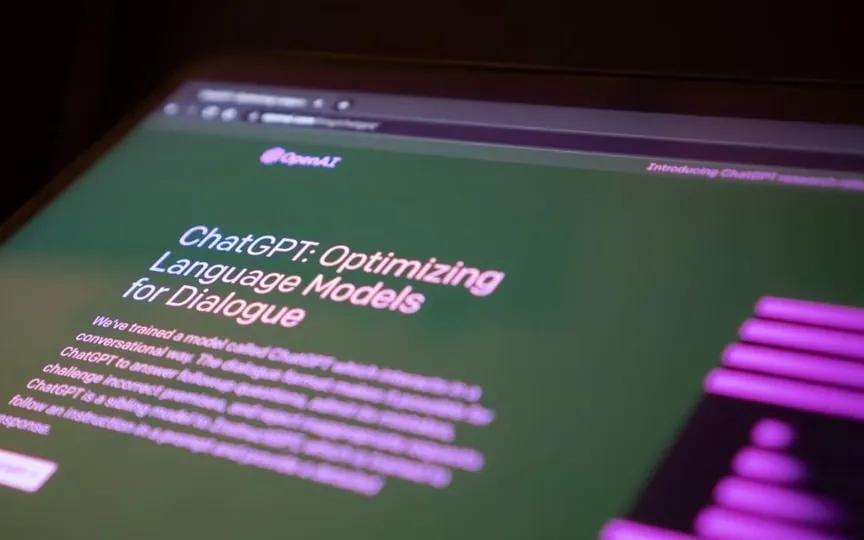COP28 Climate Targets: Can AI Help Us Reach Them – and What Will It Cost?
Ants leave chemical pheromones along their trail to communicate with other ants when traveling between their nest and a food source.
Before long, the shortest route has the strongest chemical signature, which helps other ants learn to use it, said Tshilidzi Marwala, an artificial intelligence engineer and president of UN University.
The “ant-based algorithm” and other learning systems studied by computer scientists are now being used to reduce inefficiencies in production processes – one way to reduce global warming.
“Today we have ant-based AI algorithms because (they) are quite powerful,” said Marwala, who is also the UN’s under-secretary-general, in an interview at the COP28 UN climate summit in Dubai.
Machine learning tools can speed up operations in everything from reducing fossil fuel emissions to preparing for disaster threats, from making solar panels more efficient to more accurately predicting the weather.
With the promise – and risks – of artificial intelligence quickly rising on the political agenda, COP28 is the first UN climate summit to hold high-level discussions on the use of technology in climate action.
AI IN SOLAR POWER SYSTEMS?
The meeting, which runs until mid-December, has seen numerous new commitments to cut emissions, and 118 countries pledged on Saturday to triple the world’s renewable energy by 2030.
Artificial intelligence could help make some of them a reality, Marwala said.
For example, IT can be embedded in solar energy systems to maximize absorption by helping solar panels determine the optimal location to capture the sun’s rays, just as sunflowers do.
Machine learning can also help more accurately predict climate-induced impacts such as floods and forest fires, with powerful computers testing likely scenarios at a fine scale.
However, technology experts warn that a severe lack of data and AI tools in developing countries could make algorithms less accurate.
Sinead Bovell, a US technology commentator and “futurist”, said the lack of adequate data collection in the Global South means weather forecasting systems may not be accurate.
“If artificial intelligence is going to be a tool in the fight against climate change, it has to be a global group project,” he said in an interview.
Bovell said high-level discussions at the summit showed leaders recognize AI is a “critical tool” in meeting global climate goals.
“We need to deploy some of these technologies to really get to the goals we want in a timely manner,” he said.
AI could be a vital support, especially in achieving new commitments to triple renewable energy and double energy efficiency by 2030, its supporters said.
At UiT, the Arctic University of Norway in Tromsø – the northernmost university in the world – materials researcher Matteo Chiesa and many of his doctoral students work with companies on the challenges of introducing electricity in remote Arctic locations.
He noted that power lines that are closer to the end of the grid connection are more prone to failure, but information about, for example, wind power and direction or electricity transport can be passed through the algorithm to proactively identify weak points.
“It helps, for example, to manage the resources that you have,” said Chiesa, who also works at Khalifa University in the United Arab Emirates.
He also uses artificial intelligence to improve energy supply and demand forecasting so that companies can lower the price of electricity during off-peak periods and reduce demand during peak periods.
“The idea is, how do you regulate and how do you encourage the transfer of… the use of electricity?” Chiesa asked.
Grid demand management is also becoming more important with the global increase in wind and solar power, which varies with the weather – and as demand for electricity increases with new technologies such as electric vehicles.
THE CHALLENGES OF USING AI
So far, AI tools and data for climate action have been concentrated in only a few nations dominated by the United States and China.
According to data compiled by Stanford University’s Institute for Human-Centered Artificial Intelligence, in 2022 private investment in artificial intelligence in the United States will reach $47 billion, more than the next 14 countries combined, including China, which had $13 billion.
The large amounts of energy used by AI is another major concern, as is the large amounts of water needed to cool data centers.
The training GPT-3 – the model used by the company OpenAI to power OpenAI’s ChatGPT in Microsoft’s US data centers – could directly consume 700,000 liters (154,000 gallons) of clean fresh water, according to an estimate published by the University of California, Riverside. April.
Marwala of the UN University said that solving these problems requires finding better methods for training AI systems and ensuring that the systems run on renewable energy.
“How much energy or carbon dioxide does the world have to pay to get these models?” he asked.




